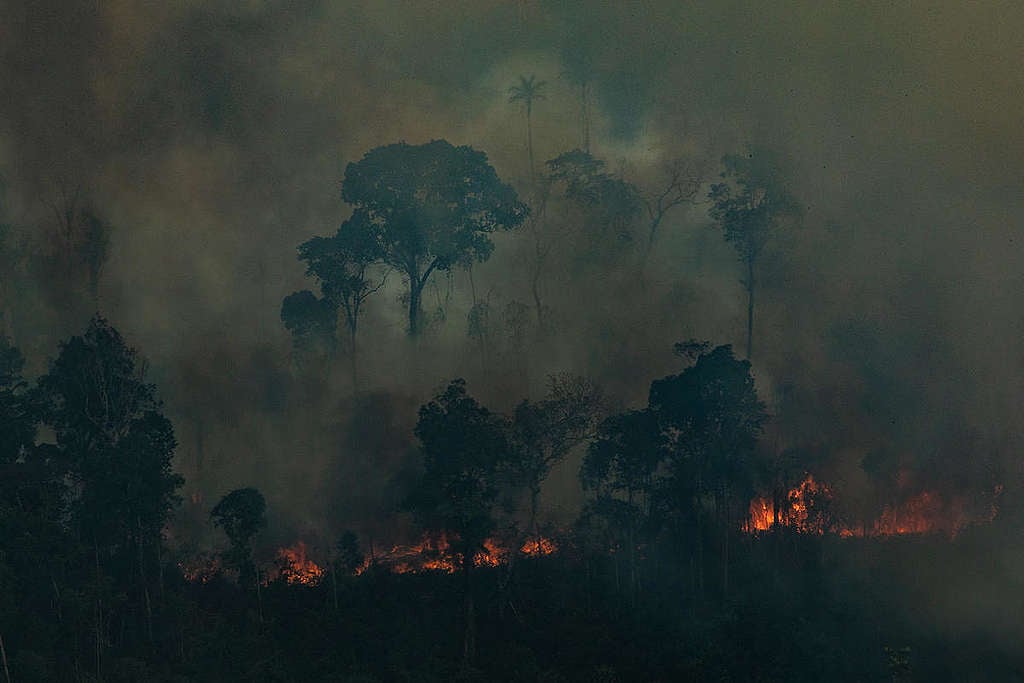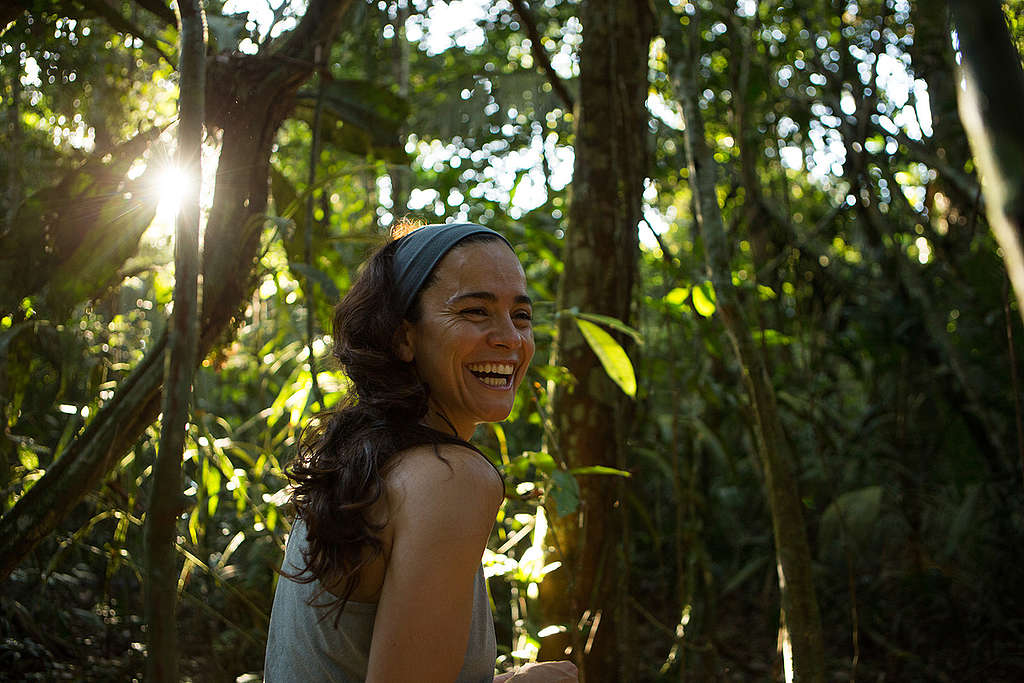Brazilian actress Alice Braga and Greenpeace partnered this summer to launch Countdown to Destruction, a three-video animated series that explains how the production of food commodities such as meat, dairy, soy and palm oil at an industrial scale is causing widespread deforestation across the world, displacing and threatening Indigenous Peoples, and fueling the climate crisis.

Back at the beginning of the pandemic, we saw posts everywhere saying that “nature was healing” as animals strolled freely around cities, pollution levels dropped drastically, allowing people to see what wasn’t in their horizon before. But this was framed wrong: we should not focus on the healing, but on what had made nature sick in the first place.
Normal wasn’t normal.
In a world shaken by COVID-19, we are being faced with one of the biggest dilemmas of our times: The demand for infinite growth is clashing full-front with the climate crisis. The economy can no longer grow without crashing the ecosystems that sustain humanity. At the center of this clash is the Amazon rainforest.
The Amazon is the crossroads that connects everything in our world: from criminal fires to rare minerals, from monocultures supply chains to eco-farming frontier. From freshwater to huge dams. From indigenous historical struggles to neo-colonial NYSE interests.
The majority of the food people eat in the US, Europe, and Asia comes from places that were once forests. If it’s not meat, it’s soy. If it’s not soy, it’s palm oil. All choices we make in the supermarket, whether we want it or not, are based on this chaotic, out-of-control commodity system. Everyone is a part of this.
We are often told that our individual choices are very important, but this responsibility shouldn’t fall only on us. Nothing will really change if brands and governments do not step up to their responsibility of creating a better system, a system that has justice at its core. We can recycle all plastic straws we want but if corporations keep selling thousands of disposable bottles per second, our oceans will continue to be polluted with plastic.
The Amazon is not just a Brazilian issue. Every global citizen is tied to the forest’s destiny. If we don’t solve this, we won’t solve anything. There won’t be anything left to solve. Keeping the Amazon standing is the biggest battle of our lifetimes.
If we can protect the Amazon, we can solve huge global challenges on how to produce real food, provide clean energy and restore climate hope, nourishing a new modern society for all of us. But if we lose the Amazon for profit, we lose everything. It is time to focus our strength in the global south.
It is time to turn the climate crisis as an opportunity to stand for equality and justice. It is time to listen to the real unheard voices from deep within the forest. They are the ones protecting the future for us. They are the future. The time has come to step up and stand for our future. We can either all win or we all lose.
Watch the series:

Alice Braga is a Brazilian actress.
This story was originally published in Spanish here.
